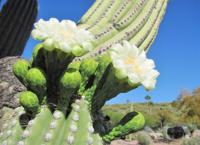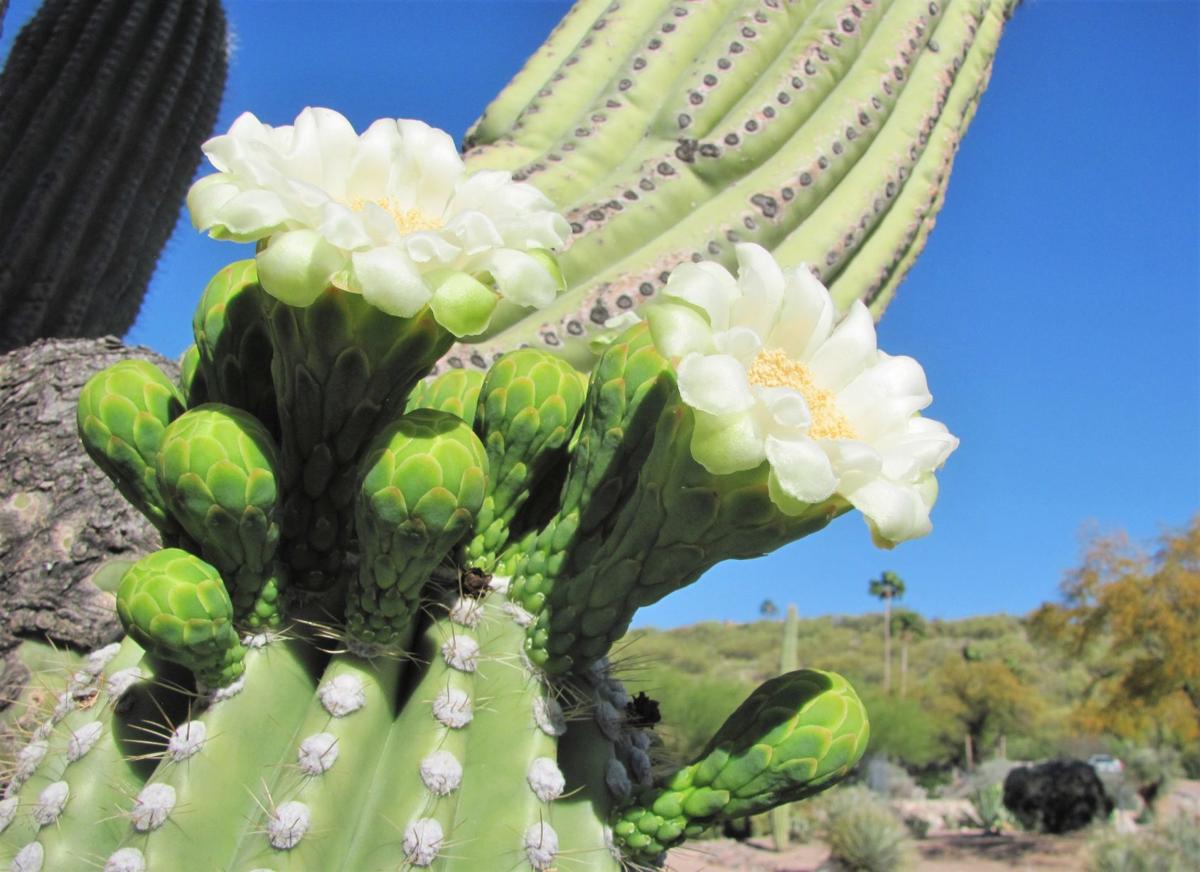Good news for those who look forward to saguaro blooms: A few of the big cacti, which typically flower later in April and May, are showing early blossoms this week.
One blooming saguaro was spotted in the Catalina Foothills, but you might find others in the coming week at Saguaro National Park and elsewhere.
Cactus experts say this is still early for a widespread saguaro bloom, but saguaros can be a bit unpredictable.
Peak blooms of saguaros have often occurred from mid-May to mid-June. But Mark Dimmitt, a retired director of natural history at the Arizona-Sonora Desert Museum, has noted that museum phenology records show at least sporadic saguaro blooms on a few plants in every month of the year except February.
A Saguaro National Park visitor guide described saguaro flowering this way: “Each blossom opens after sunset in the cool of the night. By the next afternoon, the flower has wilted and the brief period of bloom has ended. The spectacle repeats itself night after night for about four weeks until as many as 100 flowers have bloomed on each saguaro.”
Saguaro blooms have a purpose beyond posing for photos.
They attract flying animals — from white-winged doves and long-nosed bats to honeybees and moths. As these airborne visitors chow down on the nectar inside saguaro flowers, they become powdered with pollen.
Then, as they flit from flower to flower, they pollinate along the way.
The fruit of saguaros ripens in June and July, with the pulp of the fruit containing seeds that can lead to a new generation.





